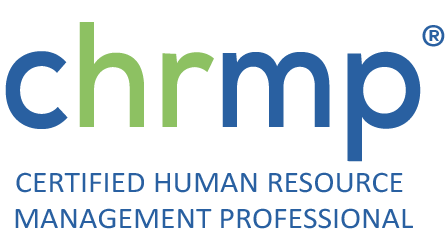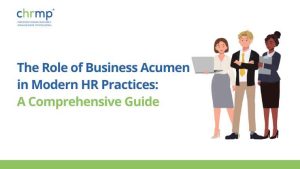Table of Contents
ToggleIntroduction to Exit Interviews Questions
What are Exit Interviews?
Exit interviews are structured conversations conducted with departing employees, aiming to gather insightful feedback about their experiences within the organization. These interviews serve as a crucial tool for human resources (HR) departments to understand the reasons behind an employee’s decision to leave and identify areas for improvement in the workplace.
Thank you for reading this post, don't forget to subscribe!importance of Exit Interviews
Conducting exit interviews is vital for several reasons. They provide a unique opportunity to gain candid feedback from employees, who may feel more comfortable sharing their true thoughts as they leave the company. This feedback can reveal underlying issues such as management challenges, workplace culture problems, or gaps in professional development opportunities that might not surface in regular employee surveys.
For instance, if multiple employees cite a lack of career growth opportunities as a reason for leaving, HR can develop targeted strategies to enhance training and development programs. This proactive approach can significantly improve employee retention and overall job satisfaction.
Objectives of Exit Interviews
The primary goals of conducting exit interviews include:
- Identifying Reasons for Departure: Understanding why employees leave helps HR address systemic issues and reduce turnover.
- Gathering Constructive Feedback: Honest feedback on policies, management, and the work environment can guide improvements.
- Maintaining Positive Relations: Conducting a respectful and empathetic exit interview can leave departing employees with a positive impression of the company, which is crucial for maintaining a good reputation.
- Learning from Employees’ Experiences: Insights gained can be used to refine recruitment and onboarding processes, ensuring new hires have a better experience.
Consider a scenario where an employee cites micromanagement as a key factor in their decision to leave. During the exit interview, they might share specific instances where they felt their autonomy was undermined. This feedback is invaluable; it highlights a potential training need for managers on how to balance oversight with employee autonomy. By addressing this issue, the company can foster a more empowering work environment.
Preparing for the Exit Interview
Scheduling and Timing Exit Interviews
Proper scheduling of the exit interview is crucial for obtaining the most accurate and comprehensive feedback. It’s best to schedule the exit interview during the employee’s last week, ideally a few days before their final day. This timing allows the employee to provide reflective and thoughtful feedback without the immediate pressure of leaving. Avoid conducting the interview on the employee’s last day, as the rush to complete exit formalities might overshadow the importance of the conversation. Additionally, schedule the interview at a convenient time that doesn’t conflict with the employee’s remaining duties or personal commitments.
Creating a Comfortable Environment
A comfortable environment is essential for encouraging honest and open dialogue. Here are some tips to ensure the departing employee feels at ease:
- Choose a private and neutral setting for the interview. A quiet meeting room, away from the employee’s usual workspace, helps create a relaxed atmosphere.
- Conduct the interview in a friendly and non-threatening manner. Start with some casual conversation to ease any tension.
- Clearly explain the purpose of the exit interview and how the feedback will be used to improve the organization. Emphasize that the goal is to gather constructive feedback and not to evaluate or criticize the employee’s performance.
- Utilizing a structured form or an exit interview template can help guide the conversation, ensuring that all relevant topics are covered systematically. It also makes the employee feel that their feedback is taken seriously and recorded accurately.
Anonymity and Confidentiality
Assuring employees that their responses will be kept confidential is crucial for obtaining honest feedback. Here’s how to emphasize and maintain confidentiality:
- Clearly communicate that their feedback will be anonymized and shared only in aggregate form, ensuring that individual responses cannot be traced back to them.
- Explain how the data will be handled and stored securely. Assure them that only authorized HR personnel will have access to their responses.
- After the interview, provide a summary of how the feedback will be used. This follow-up can help reinforce trust and show that their input is valued and will lead to actionable changes.
By focusing on these aspects of preparation, HR professionals can create an environment that encourages honest and valuable feedback, ultimately leading to meaningful improvements within the organization.
Key Areas to Cover in Exit Interviews
- Reason for Leaving
- Understanding the primary factors that influence an employee’s decision to leave is fundamental for HR professionals. This area uncovers the root causes of employee turnover, which could range from personal reasons to job dissatisfaction or better opportunities elsewhere. By identifying these reasons, HR can pinpoint trends and address issues that may be driving employees away. The objective is to gather insights that can help the organization improve retention strategies and create a more supportive work environment.
- Job Role and Responsibilities
- Feedback on the job role and responsibilities provides a clear picture of whether the employee’s expectations matched the reality of their position. It highlights areas where job descriptions may need to be refined or where there might be a mismatch between an employee’s skills and their tasks. Understanding this alignment can help HR improve the recruitment process, ensuring future hires are better suited for their roles and that roles are clearly defined.
- Management and Leadership
- Insights into the relationship between employees and their supervisors or managers are crucial. This area assesses the effectiveness of leadership styles, communication practices, and managerial support. Positive or negative feedback here can reveal much about the overall management quality within the organization. The objective is to identify any issues related to management that may be impacting employee satisfaction and performance, allowing for targeted leadership training and development programs.
- Work Environment and Culture
- The workplace atmosphere and organizational culture significantly affect employee morale and productivity. This area examines how inclusive, collaborative, and supportive the work environment is. Feedback can uncover issues such as workplace politics, discrimination, or lack of team cohesion. Understanding these dynamics helps HR foster a positive and productive work culture that aligns with the company’s values and goals.
- Compensation and Benefits
- Gauging satisfaction with salary, benefits, and perks is vital for understanding if the organization’s compensation packages are competitive and fair. This area not only covers financial compensation but also benefits such as healthcare, retirement plans, and other perks. By analyzing this feedback, HR can make informed decisions about adjusting compensation structures to attract and retain top talent.
- Professional Development
- Evaluating opportunities for growth and learning is essential for maintaining a motivated workforce. This area focuses on whether employees felt they had adequate opportunities for professional development, such as training programs, career advancement paths, and mentorship. Insights gained can guide HR in enhancing development programs, ensuring employees feel valued and have a clear trajectory for growth within the organization.
- Company Policies and Procedures
- Feedback on company policies and their implementation provides an understanding of how effectively these policies are communicated and enforced. This includes everything from HR policies to operational procedures. Identifying any discrepancies or misunderstandings can help streamline processes and ensure that policies are fair and consistently applied. The objective is to make sure that policies support the well-being and productivity of employees while aligning with legal and ethical standards.
By covering these key areas in exit interviews, HR professionals can gain comprehensive insights that drive continuous improvement within the organization. This thorough understanding allows HR to address systemic issues, enhance employee satisfaction, and ultimately create a more effective and supportive workplace.
Steps in Analyzing and Utilizing Data from Exit Interviews
- Collect and Organize Feedback
- Start by gathering all the feedback from exit interviews and organizing it in a central location. Use an exit interview form or template to ensure that the information is structured and consistent. This could be a spreadsheet or a database where responses are categorized by question and employee.
- Review Each Response Thoroughly
- Carefully read through each exit interview response. Pay attention to both the explicit feedback and any underlying sentiments or recurring themes. Take notes on any specific issues, suggestions, or positive comments that stand out.
- Identify Common Themes
- Look for common themes or patterns in the feedback. This involves grouping similar responses together to see if multiple employees are mentioning the same issues or praises. For example, if several employees cite a lack of career advancement as a reason for leaving, this would be a significant theme.
- Categorize Feedback by Key Areas
- Organize the feedback into the key areas covered in the exit interviews, such as reasons for leaving, job roles and responsibilities, management and leadership, work environment and culture, compensation and benefits, professional development, and company policies and procedures. This helps to clearly see which areas have the most frequent and impactful feedback.
- Analyze Each Key Area
- For each key area, analyze the feedback in detail:
- Reasons for Leaving: Identify the most common reasons employees give for leaving. Are there any recurring issues such as poor management, lack of growth opportunities, or inadequate compensation?
- Job Role and Responsibilities: Look for comments about job expectations versus reality, role clarity, and skill utilization. Are employees leaving because their roles were misaligned with their expectations or skills?
- Management and Leadership: Evaluate feedback on relationships with managers and the support employees felt. Are there consistent complaints about management style or communication issues?
- Work Environment and Culture: Assess comments on workplace atmosphere, inclusivity, and team dynamics. Are there issues with workplace culture or team cohesion?
- Compensation and Benefits: Examine feedback on salary and benefits satisfaction. Are employees leaving for better compensation elsewhere?
- Professional Development: Review comments on growth and development opportunities. Do employees feel they lacked opportunities for professional growth?
- Company Policies and Procedures: Analyze feedback on the clarity and fairness of policies. Are there specific policies that are causing dissatisfaction?
- For each key area, analyze the feedback in detail:
- Develop Actionable Insights
- Turn the analyzed feedback into actionable insights. For each key area, identify specific actions that can address the issues raised. For example, if employees frequently mention a lack of professional development opportunities, HR might consider implementing new training programs or creating clearer career advancement paths.
- Prioritize Actions
- Prioritize the actions based on their potential impact and feasibility. Some issues may require immediate attention, such as management training, while others might be part of a longer-term strategy, such as revamping the compensation structure.
- Communicate Findings to Leadership
- Prepare a comprehensive report summarizing the findings and suggested actions. Highlight the most critical issues and provide evidence from the feedback to support your recommendations. Present this report to senior management to secure their support and resources for implementing the changes.
- Implement Changes
- Work with relevant departments and leaders to implement the recommended changes. Ensure there is a clear plan and timeline for each action, and assign responsibilities to appropriate team members.
- Follow Up and Measure Impact
- After implementing changes, follow up to measure their impact. Conduct regular check-ins with employees to see if the changes are having the desired effect. Consider conducting follow-up surveys or interviews to gather additional feedback and ensure continuous improvement.
By following these steps, HR professionals can effectively analyze exit interview feedback, uncover meaningful insights, and implement strategies to improve retention and workplace satisfaction. This structured approach ensures that feedback is not only collected but also used to drive positive organizational change.
Types of Interview Questions
Conclusion
Conducting effective exit interviews is a vital part of any HR strategy. By systematically gathering and analyzing feedback from departing employees, HR professionals can uncover valuable insights into why employees leave and what can be improved within the organization. This feedback helps in identifying common themes and issues, leading to actionable changes that enhance employee satisfaction and retention.
Implementing the suggested steps for preparing, conducting, and analyzing exit interviews ensures that the process is thorough and yields meaningful results. The continuous improvement of workplace practices, management strategies, and employee development programs, driven by this feedback, contributes to a more positive and productive work environment.
We’d Love to Hear From You!
We invite you to share your experiences and thoughts on exit interviews. Have you discovered any unique insights from conducting exit interviews? What strategies have you found effective in utilizing this feedback for organizational improvement? Please leave a comment below and join the conversation. Your contributions can help others enhance their exit interview processes and foster a culture of continuous improvement in the HR community.





